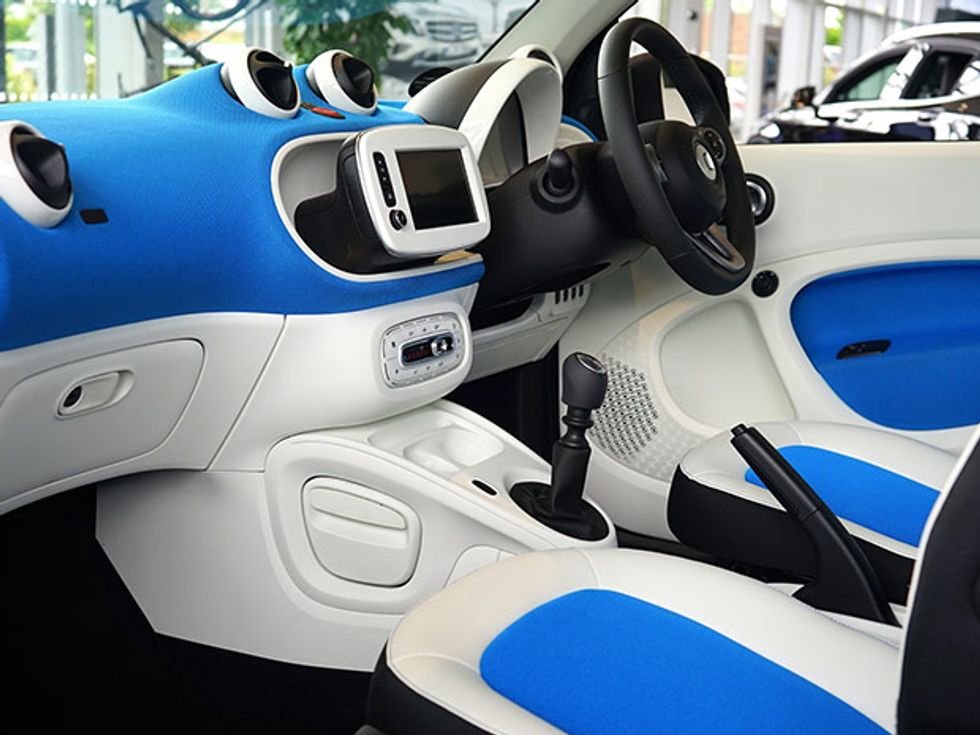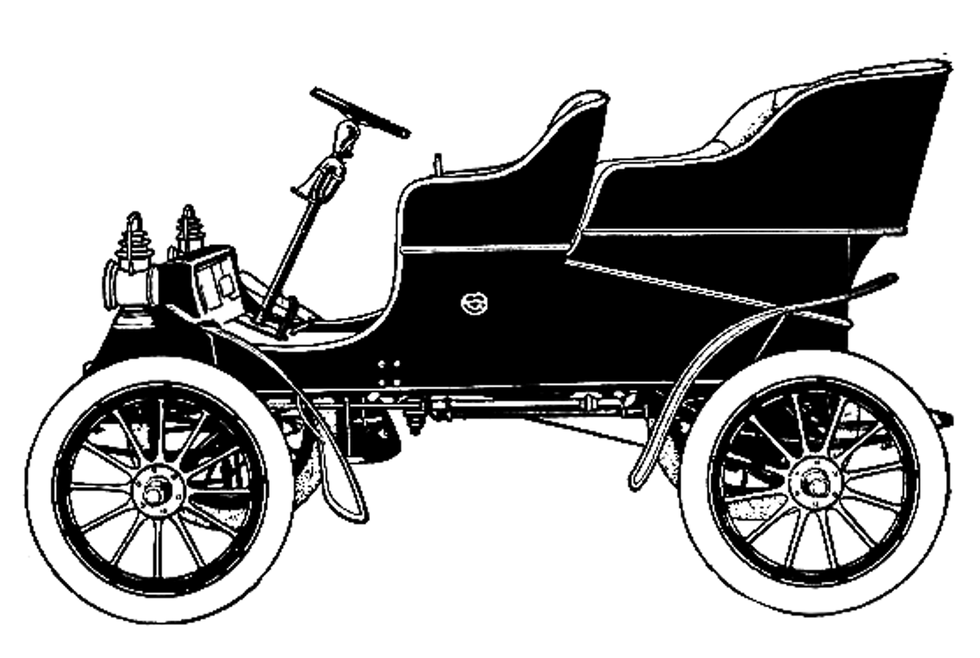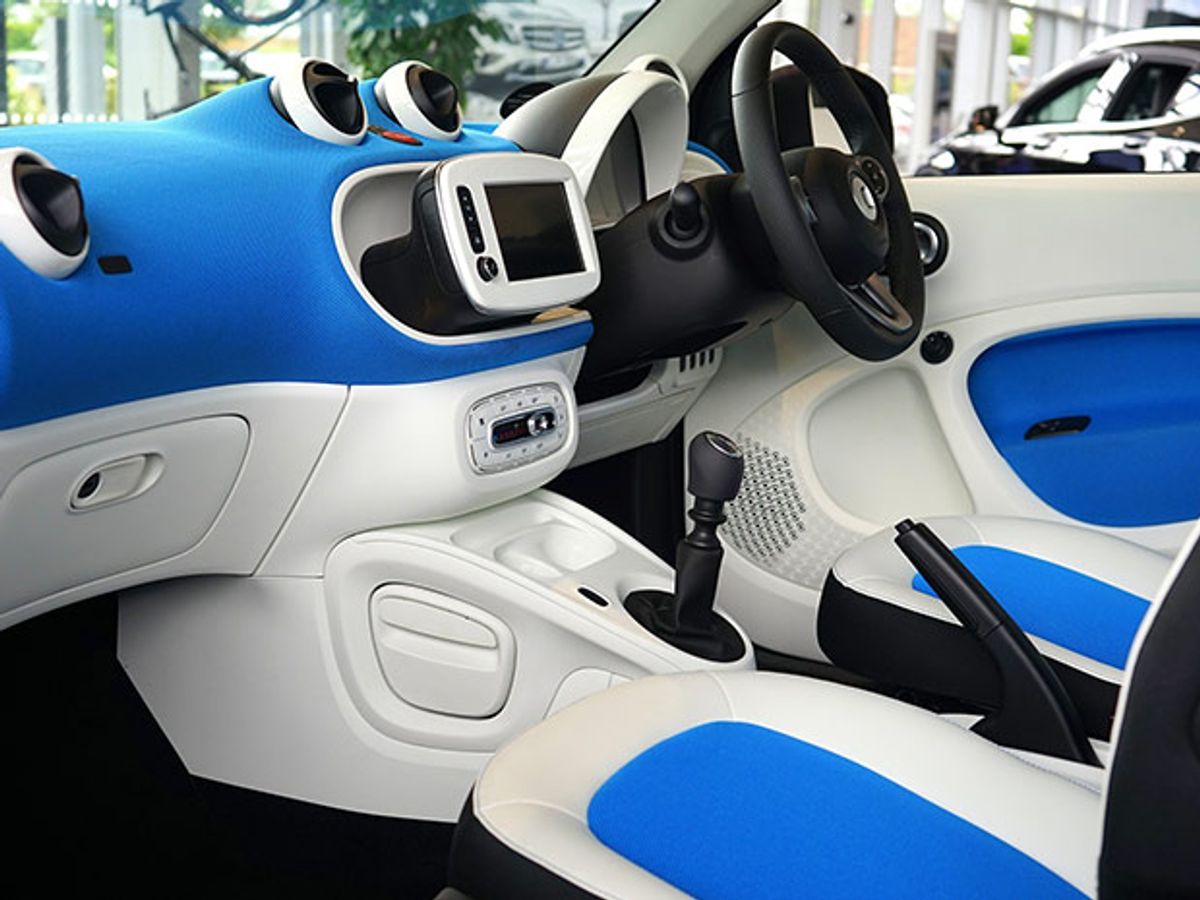
According to a study by Harvard1, the average American spends 101 minutes per day driving. Or, to put it in terms of a lifetime, an astounding 37,935 hours are spent driving a car. Perhaps even more discouraging is that most Americans are likely to spend almost as much on gasoline over their vehicle’s lifespan as its original cost.
The impact of autonomous vehicles on the aforementioned statistics barely needs explaining, nor do the merits need defending. Can you imagine what you’d be able to do with that extra 4.3 years of productivity? All that time in your life would be returned. You could squeeze in an extra week or two of vacation time, certainly.
Aside from the financial and practical considerations that this brave new era of automotive is ushering in, there is another upside to the relentless forward drive in the space, with the advent of 3D printing, which brings us another surprise advantage: customization.
Think about it. As humans, we love things to be personalized. We go to great lengths to show off our sense of style, good taste, and purchasing power. We hire architects to design our homes the way we want them to look. We decorate our cubicles at work. We customize sneakers online. What, then, could we do with the chariot where we spend thousands of hours over the course of our lifetime? Does it not, too, deserve the level of personalization we have grown accustomed to? Should we not be able to walk into a car dealership, have a chat with a designer about what we want, see them input it into a computer-aided-design (CAD) program, and then have the whole thing manufactured on the spot by a giant 3D printer?
The 3D-print shops and designers of this world believe we should be able to this at some point and, in fact, companies like Local Motors – a Mouser partner in the Essence of Autonomy Challenge2 – are already pushing the envelope in terms of what is possible when it comes to 3D printing as much of a car as possible, while also furthering automation. That’s no small effort. A modern car typically sports around 20,000 individual components, assembled by a choreographed symphony of machines, each dedicated to a single function (plus a few humans for oversight and servicing).
Different automotive parts are made from different materials, in varying shapes and thicknesses, not to mention levels of complexity. Then there are the computer and electrical systems, the engines, the batteries. So one cannot simply press a button and have a car printed in one go. Indeed, a traditional assembly line could make a hundred vehicles at a time, while even the most advanced 3D printers of today and the near term future would be restricted to printing just one. And yet, that is the dream.
There are plenty of experts who claim extreme car personalization on a mass scale is practically impossible within the next 100 years or so, due to this lack of current infrastructure, design requirements, and federal safety regulations, but there are just as many seemingly challenging that assumption. “If you’re looking for a bare-bones mechanical car, everything can be printed today in 2016. If you’re looking for modern amenities like air-conditioning, power windows, and Elon Musk personally controlling your car from a joystick in his Mountain View office, I think that would all be manageable by 2025,” said Alder Riley, who has been working and speaking in the automotive space for almost a decade.
Automotive Remodels Itself
It’s worth remembering that the automotive industry is a $9 trillion behemoth that has been revolutionized more than once. Consumers ultimately dictate whether an industry sinks or swims, barely survives or thrives. And consumers want customization.
“Henry Ford lost market share at the very beginning of the car industry because he didn’t see the need for customization,” explained Marco Perry, an inventor, designer, and engineer working for a New York-based firm. “It was any color you wanted, as long as it was black. Ultimately, what became GM proved to Ford that people want options.”

That said, Perry admitted too many choices or open-ended options would only serve to confuse people, and that mass customization probably won’t be as common as the ability to produce cars that serve a small niche viably. That’s because one wouldn’t need to produce a large amount of inventory to lower the cost of production.
John Kawola, president of a 3D-printing manufacturer, agrees. “It’s a problem of scale,” he said. “You still need a really large 3D printer to print a bumper.” With the exponential rate technology is progressing, however, that projection is not inconceivable, and may even end up being affordable faster than one would expect.
One could, for instance, start with a stock vehicle body, and add to it. Manufacturers could theoretically develop a controlled CAD system where users could add to the car’s chassis, but not subtract from it. The software could even do virtual wind tunnel performance testing to determine how the body additions would affect performance, and automatically ensure that hoods, doors, gas tank doors, windows, and more would still function, and account for things like windshield wipers, side view mirrors, sun-roofs, and more.
Other experts believe subtractive manufacturing might make more sense, within specific safety guidelines, because shrinking cars from 5000 lbs to some 1500 lbs in lighter weight 3D-printed materials raises important safety issues that have yet to be fully tackled. “The automotive industry is regulated for safety. If you give the consumer the ability to change their car design, you open up a risk,” said Kawola.
Materials, too then, are another aspect of car design and production that 3D printing will change. The aerospace industry, which like the automotive industry needs long-term reliable parts, has already begun that change. Kawola noted that because aerospace is an industry which makes lower volumes in terms of units, companies have been able to innovate on 3D printers before now. “Aerospace very much values the benefits 3D printing can bring, especially when it comes to designing things that are lighter weight,” he said, noting that companies typically only make a few dozen new planes a year, as opposed to hundreds of thousands of cars the automotive industry churns out.
“The last year or two there has been a major focus on new materials and the process cars can be printed with. Everyone is realizing that a lot of the materials today can be optimized and perform much better,” said Adam Clark, another consultant specializing in additive manufacturing and engineering design services.
“From a functional standpoint it’ll just be metals and carbon fiber, but everybody knows that one day someone will 3D print a car body out of pancake batter,” joked Riley, adding that aluminum alloy frames would likely become more prevalent because of their light weight and strength. Today very few car models are aluminum because it is hard to work with in current technologies. Meanwhile, Clark noted that major OEMs are already saying that they expect to be using 3D-printed parts fairly regularly within two to three years, though he admits that whether or not manufacturers will ever be happy to relinquish control of their designs to general buyer clients is another matter. “What I can see are design options which are approved by the manufacturer,” he said.
Breaking Automotive Design Rules
Though some may feel that the above limits the creativity and blue sky opportunities in customization that 3D printing affords, it may be for the best. After all, as many a design expert knows, customers rarely truly know what they want, nor would the vast majority of them be capable of designing something safe and functional for themselves. “Design work should be left to designers” is a common expert refrain.
“Ultimately, despite the technology, people don’t want more options, they just want their choice to be available,” explained Perry.
The maker generation certainly has access and exposure to the technology from a young age, but that doesn’t mean the expectation to make road-safe, quality vehicles is already ingrained. “I see a lot of design rules being broken in the future, but I believe analysis tools will be so powerful that they will automatically build a structure that can withstand the application conditions,” said Clark, noting that the overall shape and “feel” of the design will be what the human input will be. What will be cool, however, is the notion that once the machines get advanced enough, and once the kinks have been worked out of the manufacturing, a car maker might be able to print out both a roadster and a minivan on the same machine, just by tweaking the software. And that’s not even mentioning the custom add-ons that are already a huge market in current day automotive ware. As 3D printing improves, you can do thousands of “custom” parts more cost effectively.
Will car repair become cheaper then? Well, if autonomous vehicles are really all they are cracked up to be, surely we won’t need too much car repair anyway, but the short answer is “probably, yes.” Even today, one can go to a car detailer to replace a headlight and find that the entire housing can be 3D printed on the spot, thereby reducing space that has to be taken up for parts in warehouses, because 3D printing eliminates inventory purchasing and storage-space costs. Aftermarket parts suppliers will be able to manufacture parts on-demand and on an as-needed basis. Traditional car makers are also slowly waking up to the benefits of 3D printing, initially to replace factory tools and fixtures made from expensive, resource-hungry metal
So, what will the future of car buying look like? Might we simply don our virtual-reality headsets and swipe and drag parts onto a custom frame until we’re happy with the final result? It’s very possible. It also may lead to making cars on-demand rather than churning out hundreds of thousands of them and waiting to make a sale. Indeed, this is exactly what Tesla does by taking customer down payments before starting the manufacturing process. It’s more sustainable, ecofriendly, and cost effective.
The automotive industry might also draw inspiration from firms making prosthetic limbs, in large part through 3D printing. Of course, while the underlying mechanics are all standardized, many companies are trying to offer their customers a limb that reflects their personality. “The rich will always find ways to spend money so I’m sure this will be a thing,” noted Riley.
References
- “Moderate exercise: No pain, big gains,” Harvard Men’s Health Watch, https://www.health.harvard.edu/newsletter_article/Moderate_exercise_No_pain_big_gains
- Essence of Autonomy Challenge, https://localmotors.com/essence-of-autonomy/, https://www.mouser.com/empowering-innovation/3d-printed-car



